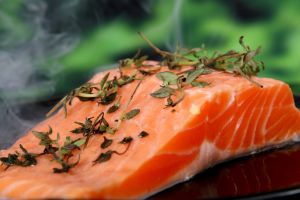Book Review: The CIG to Eating Clean

Want to improve your health by improving your diet? Cutting convenience foods out of your eating plan is one of the most important steps you can take toward enjoying a healthier lifestyle.
While the idea of moving away from convenience foods might seem to be overwhelming at first, it's a change that anyone can make. Making this change begins with making a commitment to eating clean.
It's up to you to make up your mind that you'll no longer eat – or serve – heavily processed foods that are packed with ingredients that you can't pronounce, excess sodium, and empty calories. The Complete Idiot's Guide to Eating Clean is a great resource for anyone who wants become healthier by committing to eating wholesome, natural foods.
About The CIG to Eating Clean
The CIG to Eating Clean is filled with useful information for people who are interested in learning how to clean up their diets.
The book begins with a discussion of what eating clean really is, along with information about the many benefits of eliminating processed foods from your diet. For example, you'll learn about the relationship between processed food consumption and obesity and chronic disease and the related benefits of clean eating.
Tips for Eating Clean
The book also provides steps that people who want to eat clean should follow and tips for making the necessary diet and lifestyle changes. Rather than telling you to memorize a list of foods to eat and foods to avoid, the information in this book is presented in a manner that's designed to help you learn – and adopt – the basic principles of clean eating.
You'll learn a variety of tips for healthy eating, such as avoiding eating white foods. After all, grains aren't naturally white in nature. Instead, by the time grains have turned white, they have been so heavily processed that most of the nutrients are removed and they have become so easy to digest that consumption causes a rapid spike in blood sugar levels. This is just one example of the many things you need to know to incorporate the habit of clean eating into your everyday life.
Preparing and Shopping for Clean Eating
The book also provides detailed information about what types of foods and preparation techniques should be adopted by people who are committed to enjoying the health benefits of clean eating. When you read this book, you'll learn how to shop appropriately and find out what foods and supplies to keep on hand in your pantry and kitchen cabinets. You'll even learn tips and techniques that you can use to stay on track with your clean eating goals when dining out.
Additional Helpful Information
The CIG to Eating Clean even features a glossary of food and nutrition terms used throughout the book, making it easy for to understand even the most technical of terms whether or not you have prior knowledge of the topic. The book also has a sample five day menu plan, providing a way to see how to adapt what you've learned about clean eating to a dining strategy that can help you accomplish your personal diet and nutrition goals.

Recipes for Clean Eating
The CIG to Eating Clean also contains a number of tasty recipes designed to fit into a clean eating lifestyle. All of the dishes are easy to make, so even novice home cooks will quickly see just how do-able it is to adopt a healthy clean eating approach to meal preparation and eating.
A few examples of the easy-to-prepare, nutritious recipes in The CIG to Eating Clean include:
- Avocado and Corn Crab Cakes
- Eating Clean Spice Blend
- Greek Salmon Slaw
- Green Beans with Caramelized Onions
- Hearty Onion Soup
- Maple Veggie Mashed Potatoes
- Peanutty Dip
- Pumpkin Orange Spice Cake
- Rosemary Roast Beef
- Whole Wheat Italian Bread Salad
- Dozens of additional delicious recipes

About the Author
Diane A. Welland, M.S., R.D., author of The CIG to Eating Clean, is an active professional in the field of diet and nutrition. She teaches nutrition courses at Northern Virginia Community College and works as a freelance writer and consultant. She is a contributing editor for the Environmental Nutrition Newsletter. She is actively involved with the Food and Culinary Practice Group of the American Dietetic Association and the International Association of Culinary Professionals.
----------------------------------------------
Thanks to the Penguin Group for providing me the opportunity to review this book. ~MW













